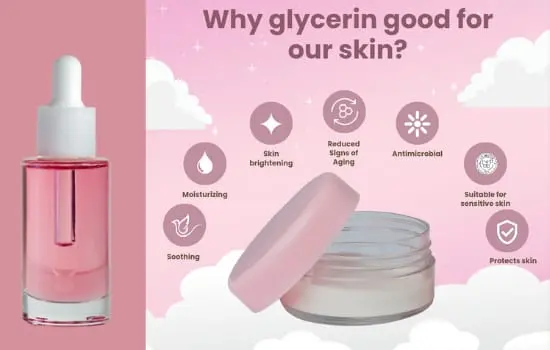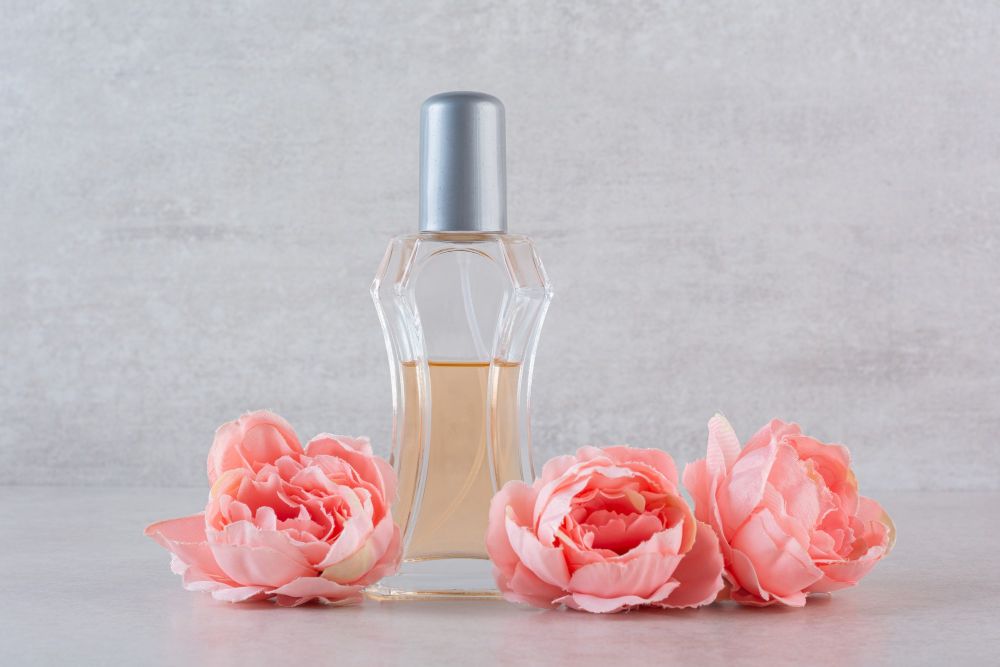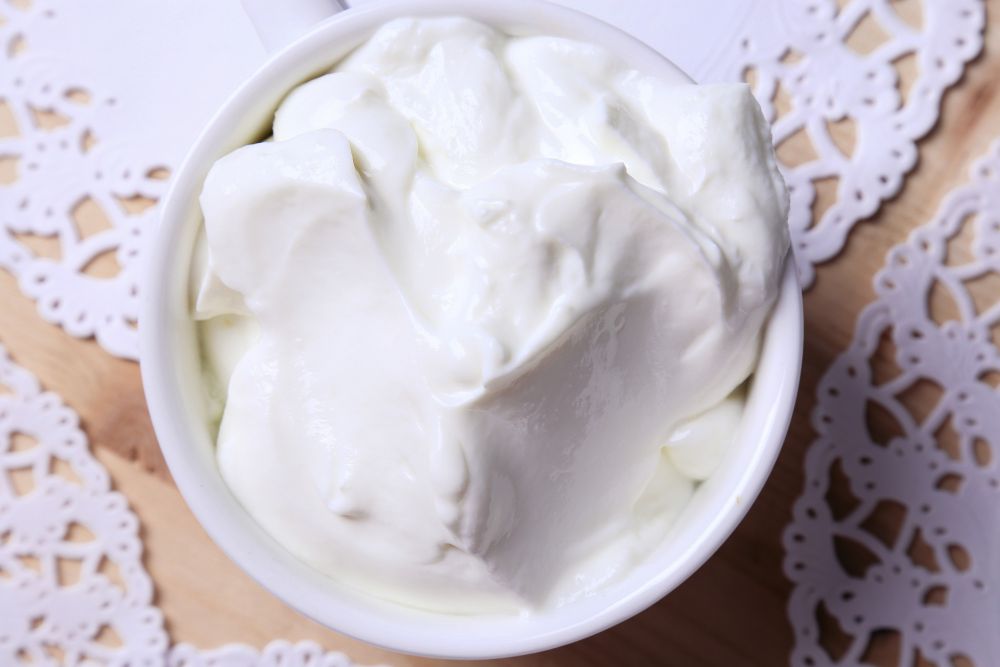Bust the Myths: Does Glycerin Clog Pores?
Is Glycerine a super-hero or a sneaky pores-clogger? This ingredient is often misunderstood. Some swear it is hydration, while others fear that it secretly clogs pores. Join us on our journey, understand the role of glycerine in your skincare, and discover if this ingredient is a friend or foe of your precious pores. When it comes to skincare, there are countless ingredients and products that claim to offer the best solutions for flawless skin. However, some myths and misconceptions often make it challenging to separate fact from fiction. One such rumor is that Glycerin, a commonly used skincare ingredient, can clog pores. In this blog post, we will dive into the truth about Glycerin and its effects on the skin.
Glycerin: What is It?
Glycerine or glycerol is a superstar moisturizer for your skin. It is just like capturing a loving essence of your skin from plant or animal fats during a process called saponification. You can’t ignore the ability of this ingredient to attract and lock in moisture. Next time, when you see any product label with the ingredient glycerine, don’t fear just grab them to feel oh-so-soft skin 😉
Glycerin is an unsung superhero, and due to its moisturizing powers, it is used in most of the products such as:
- Lotions
- Soaps
- Toners
Is Glycerin Comedogenic:
There is a common misconception and Myth that glycerin-containing products can clog pores and lead to acne breakouts and pimples. However, this belief is not true. Glycerin is non-comedogenic, meaning it does not block or clog pores. Glycerin is a small molecule (OH) that penetrates easily into the skin without making an occlusive layer that contributes to pore clogging but it benefits acne-prone skin due to its super moisturizing power and soothing effects. Due to its non-irritating ingredients, it is tolerated by almost all skin types.
The Science Behind Non-Comedogenicity:
To understand why Glycerin is non-comedogenic, we must explore how blackheads or whiteheads are formed. Comedones (black head and white heads) occur when excess oil, dead skin cells, and other impurities and dust particles accumulate in the hair follicle and cause blockage. Due to this blockage, bacterial growth increases, which triggers acne and inflammation. Due to the hydrophilic nature of glycerin, it attracts moisture and provides hydration to the upper layer of the skin preventing the excess buildup of dead skin cells that may contribute to clogged pores. Additionally, glycerin does not undergo oxidation which leads to free radicals and causes skin inflammation and acne.
The science behind the non-comedogenic property of glycerin lies in its hydrating and moisturizing properties that discourage comedone formation.
Does Glycerin Cause Breakouts:
People are often concerned about using glycerin because they think that it will cause breakouts and acne, but this is not true because it is scientifically proven that it attracts moisture provides relief, and soothes irritated skin. Researchers claim that Glycerol readily available as a major component of many skin care products may help people with skin conditions such as Psoriasis, eczema, atopic dermatitis, and non-melanoma skin cancer.
Can Glycerin Cause Acne:
It is the most common question that people ask our experts. Before answering it is important to understand the difference between acne and breakouts. If you are confused about these two most used terms, evaluate how frequently you have pimples on your skin. If you experience a few blemishes that come and go then it is occasional breakouts but if you notice blemishes that always seem on your skin then you are dealing with acne.
Now come to the second point will glycerin cause acne? The research was conducted on which people who were having acne were given moisturizer with a humectant like glycerin, they used it for almost three weeks and they found glycerin the most effective when used in the right concentration.
Benefits of Glycerin for the Skin:

Rather than causing skin issues, Glycerin offers numerous benefits for all skin types, including acne-prone skin. Let’s explore what does Glycerine do for your skin and how to it into your skincare routine:
Glycerine – A Moisture Magic:
Glycerin acts like a moisture magnet for your thirsty skin cells. It is a powerful humectant that attracts moisture not only from the environment and locks it into the skin but also pulls moisture from the deep layer of the skin and brings it to the upper layer, preventing dryness and dehydration.
One of the studies demonstrate the effect of glycerin with other humectant such as hyaluronic acid gives an instant moisturizing and hydrating effect to the skin improving the skin barrier function at the same time.
Soothing Effect Of Glycerin:
Plant-based glycerin works amazingly for the skin by creating the skin barrier between your skin and the environment and keeping out the toxin. It is very light and gentle on the skin removing temporary discomfort, redness, inflammation, and itchness of the skin.
Glycerine’s Healing Hug:
Glycerine that works as a comforting hug for your wounded skin. When your skin is affected by harmful environmental factors it needs extra love and glycerine speeds up the healing process of your skin.
Timeless Treasure – Anti-Aging Properties:
Glycerin not only helps to maintain the skin’s moisture level but also acts as a strong barrier against UV rays, pollution, and harmful elements and protects your skin from premature aging. It also prevents the dirt that causes pore clogging. Glycerin helps to minimize the appearance of fine lines and wrinkles, giving the skin a plump and youthful look.
A De-Tan Solution:
Glycerin is a De-Tan solution because it acts as a mild sunscreen. If your skin is tan due to sun rays, Glycerin helps restore your initial skin tone. Moreover, it removes dust and impurities in the pores and lightens your skin tone.
Remove Dead Skin Cells:
Glycerin breaks down the protein in dead skin cells and removes them. Due to this, new cell generation starts. Thus giving you healthy and new skin.
Quick Solution Of Dry Chapped Lips:
Dry chapped lips do not look good and fresh appearence. Apply some glycerin and give life to your dull, dehydrated lips in one go.
Note: Before using any product on your face, always remember to do a patch test or Talk to your dermatologist.
How To Use Glycerin:
Glycerin is an impressive skin care product, and usage of Glycerin is a very simple and effective way to keep your face hydrated and nourished.
Let’s see how we can use Glycerin for skin care.
- Clean your face with gentle cleanser and lukewarm water
- Dry your skin with a tissue or soft towel.
- Apply a small amount of Glycerin to your fingertips.
- Massage the Glycerin on your skin, especially dry areas.
- Leave it for 15-20 minutes for deep moisturization and better hydration.
- Rinse off Glycerin with water.
- Pat your skin dry.
- The consistency of Glycerin is thick so that you can dilute it with aloe vera gel, rose water, vitamin E, or any face mask or moisturizer for more impressive results.
- You can use it on your lips as a lip balm.
- You can use Glycerin as a daily moisturizer before going to bed.
- Remember to drink water and maintain healthy food to support overall skin health.
Tip: If your lipstick has dried out, add a few drops of Glycerin to it and bring back your makeup to life.
Compatible Ingredients With Glycerin:
There is a list of compatible ingredients that work amazingly when mixed with glycerin, such as Hyaluronic Acid, Niacinamide, Retinol, and other skincare acid. But do not opt a product that contains ascorbic acid and glycerin together as it will increase the PH level and reduce the bioavailability of Vitamin C.
How to Apply Glycerin On Face: DIY Recipes

The multitasker product performs different tasks to make our skin glow and supple. We can apply Glycerin on the face differently according to your skin issue.
Glycerin Lip Balm:
- Mix Glycerin with Coconut oil, Shea butter, or cocoa butter.
- Apply it on your chapped lips.
- Leave it overnight.
- Get rid of chemical-based lip balms.
Glycerin Toner:
Glycerin works wonders when you use it as a toner. It tightens your pores, but always use a small amount of it.
- Take half a cup of rose water.
- Add a few drops of Glycerin to it.
- Dab it on your skin gently.
- Then, apply your moisturizer.
Moisturizers With Glycerin:
- Diluted Glycerin works as an excellent moisturizer for your skin.
- Mix Glycerin with almond oil.
- Then add 2 drops of essential oil.
- Apply it on your face.
- Your DIY Moisturizer is ready.
Nourishing Mask:
- Glycerin masks nourish and soothe dry skin conditions.
- Take Half a teaspoon of bentonite clay and 3 teaspoons of white kaolin clay and mix them.
- Add half a teaspoon of vegetable glycerin,2 drops of rose geranium oil, and 5 teaspoons of water to it.
- Mix it properly.
- Apply the mask to your face. Let it dry and wash it off after complete dryness.
Anti-Aging Mask:
- Beat one egg.
- Add one teaspoon of honey and Glycerin in it.
- Apply it on your face.
- Leave it for 15-20 minutes. Wash it off with cold water.
- Apply moisturizer.
Glycerine As Cleanser:
- In all cleansers, Glycerin is an active ingredient. It maintains moisture in your skin and works for its hydration.
- Mix 1 teaspoon of Glycerin with 3 teaspoons of milk.
- Apply it on your face overnight and wash it the following day.
Some Facts: Glycerin For Skin
- The molecular structure of glycerine allows it to be easily absorbed into the skin without leaving any residue.
- Glycerine neither trap oil nor create a barrier on the skin’s surface, so there is no chance of clogging pores.
- Makeup artists use it as a primer for a dewy, glowing complexion.
- It is used as a preservative in different skin care formulations to increase the shelf life of the products.
Tip: Remember, Don’t use Glycerin directly on oily skin. Before using, dilute it with rose water or aloe vera gel.
FAQs:
Is Glycerin good for oily skin?
Glycerin reduces the pore size and is excellent toner, especially for oily skin. So, it is suitable for oily skin.
What is Glycerin Made of?
Glycerin is a type of sugar alcohol compound. It is derived from animal or plant fats. Vegetable glycerin is made from plant oils.
What are the side effects of using Glycerin?
There are very few side effects of using Glycerin. If you feel itching, redness, or any rash on your skin, then stop using this product and consult your dermatologist.
Can Glycerin irritate the skin?
Glycerin is a humectant, and it attracts water from the nearest source, especially in low-humidity environments. So, it draws water from the lower level of your skin. It can dehydrate your skin. So. always use diluted Glycerin rather than pure.
Conclusion:
Finally, in the beauty world of skincare, myths can easily confuse us when we choose any product for our skin. As we discussed about the Myth that Glycerin clogs pores, different studies show that Glycerin is non-comedogenic and beneficial in skin care. So, next time you see products containing Glycerin, you can quickly embrace its hydrating benefits without confusion about clogging pores. Your skin will thank you.


Very informative ?
Very informative
?
nice and very informative me also follow these information and remadies
?
Very effective 4 anti aging.
Very Informative ?